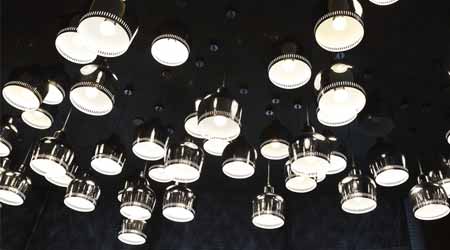LEDs Are An Ideal Platform for the Building IoT
Part 1 of a 3-part article explaining the synergy between LEDs and the Building IoT.
LEDs have revolutionized the lighting industry. What might be a surprise to facility managers, however, is that LED lighting systems may now be poised to turn building automation on its ear by becoming the platform for the Building Internet of Things (IoT).
A primary reason for this is the ubiquity of lighting. In the United States alone there are about 327 million smartphones — and 7 billion light fixtures, according to Jaime Irick, chief commercial officer with Current, powered by GE.
“In terms of fixed physical infrastructure, no other technology platform compares, just based on the pervasive nature of lighting and the potential to piggy back intelligent and connected solutions,” says Irick.
Lights are a uniformly spaced building technology that is just about everywhere IoT wants to be. In addition, LED systems have a few attributes that make them particularly suited to the Building IoT.
First, LEDs are “self-funding” due to the energy savings they can achieve over legacy systems. On these ever-proliferating LED fixtures, which are digital devices, it’s easier and less expensive (relative to alternative standalone solutions) to onboard other digital devices, like sensors, unleashing a potential world of new applications the facility management industry hasn’t seen before.
Irick says it is much the same as when cell phones became a platform, with data connectivity, cameras, GPS, etc., becoming “the ultimate edge device for consumers. We see LED fixtures with built-in sensors, cameras, and other intelligent components as the ultimate edge device for the industrial world,” he says. “It almost becomes a central nervous system for a city or enterprise.”
LED fixtures can use Power Over Ethernet, so now power and data can go to and from the fixture. POE provides 30 watts, and at least one proprietary standard can provide 60 watts per port. “The LED luminaires are the best first opportunity” for people to converge building systems onto the IT network, says John Baekelmans, CTO, vertical solutions, Cisco.
“Fundamentally, now lights are an IT device,” says Gary Trott, Cree vice president. “It makes the control and extraction of data from lights very straightforward because you’re essentially already on network gear.”
Besides being hard-wired, data from the luminaires could be transmitted wirelessly over Zigbee or WiFi.
There’s An App For That
More and more LED fixtures in facilities with more and more sensors expands the data-gathering potential of a building to the point where you can do interesting things, says Andy McMillan, president and managing director of BACnet International.
“At that point, most of the points in the building will be networked over the lighting platform, so it’s worth it to make sure that lighting network platform can integrate with the rest of the building automation so the things that aren’t lighting can also be brought into that data cloud,” says McMillan. “There’s motivation to do that because you have so much of the data already in one place. And that will lead to a fully interconnected building, which will lead to the kind of analysis that’s implicit in IoT.”
The computing and analytics layer that is possible with a networked LED lighting system, either at the edge or in the cloud, is what takes lighting away from hardware-centric systems which are passively awaiting instruction into the smart machine-learning realm of IoT, says Trott.
“A kind of an app store for buildings is going to develop,” he says, with applications written by either the hardware provider or third parties.
______________________________________
IoT Series
This is the fifth article in our ongoing Building Internet of Things series.
Read the first article about data here.
Read the second article about startups here.
Read the third article about building automation systems here.
Read the fourth article about cybersecurity here.
Read the sixth article about cross-industry collaboration here.
Read the seventh article about mobile here.
Read the eighth article about getting started with IoT here.
Related Topics:














